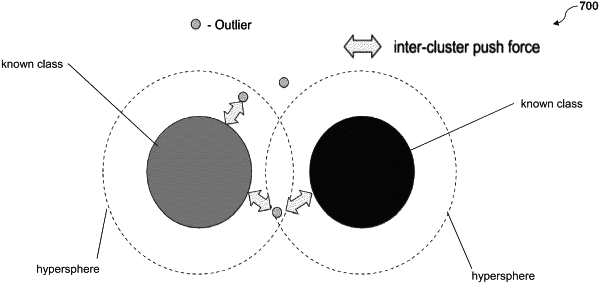| CPC G01S 17/89 (2013.01) [B60W 50/06 (2013.01); B60W 60/001 (2020.02); G01S 7/4815 (2013.01); G01S 17/931 (2020.01); G06F 18/2148 (2023.01); G06F 18/2193 (2023.01); G06F 18/23 (2023.01); G06N 3/08 (2013.01); G06T 7/11 (2017.01); G06V 20/58 (2022.01); B60W 2420/408 (2024.01); G06T 2207/10028 (2013.01); G06T 2207/20084 (2013.01)] | 20 Claims |

|
1. A computer-implemented method, comprising:
obtaining, with at least one processor, at least one point cloud;
segmenting, with the at least one processor, points in the at least one point cloud into a plurality of segments;
training, with the at least one processor, a neural network by:
providing, as input to the neural network, the plurality of segments;
receiving, as output from the neural network, for each segment, one or more first output features associated with one of (i) that segment being a known segment clustered in a known cluster of a plurality of known clusters and (ii) that segment being an outlier segment located in an outlier space located outside each known cluster of the plurality of known clusters; and
modifying one or more parameters of the neural network according to a first loss function that depends on the one or more first output features associated with each known segment to generate a first trained neural network;
training, with the at least one processor, the first trained neural network by:
providing, as input to the first trained neural network, each outlier segment;
receiving, as output from the first trained neural network, for each outlier segment, one or more second output features associated with that outlier segment; and
modifying one or more parameters of the first trained neural network according to a second loss function different than the first loss function to generate a second trained neural network, wherein the second loss function depends on the one or more second output features associated with each outlier segment; and
training, with the at least one processor, an extended isolation forest by applying an extended isolation algorithm to (i) the one or more second output features associated with each outlier segment and (ii) the one or more first output features associated with each known segment, wherein the extended isolation forest generates, for each segment of the plurality of segments, an anomaly score.
|